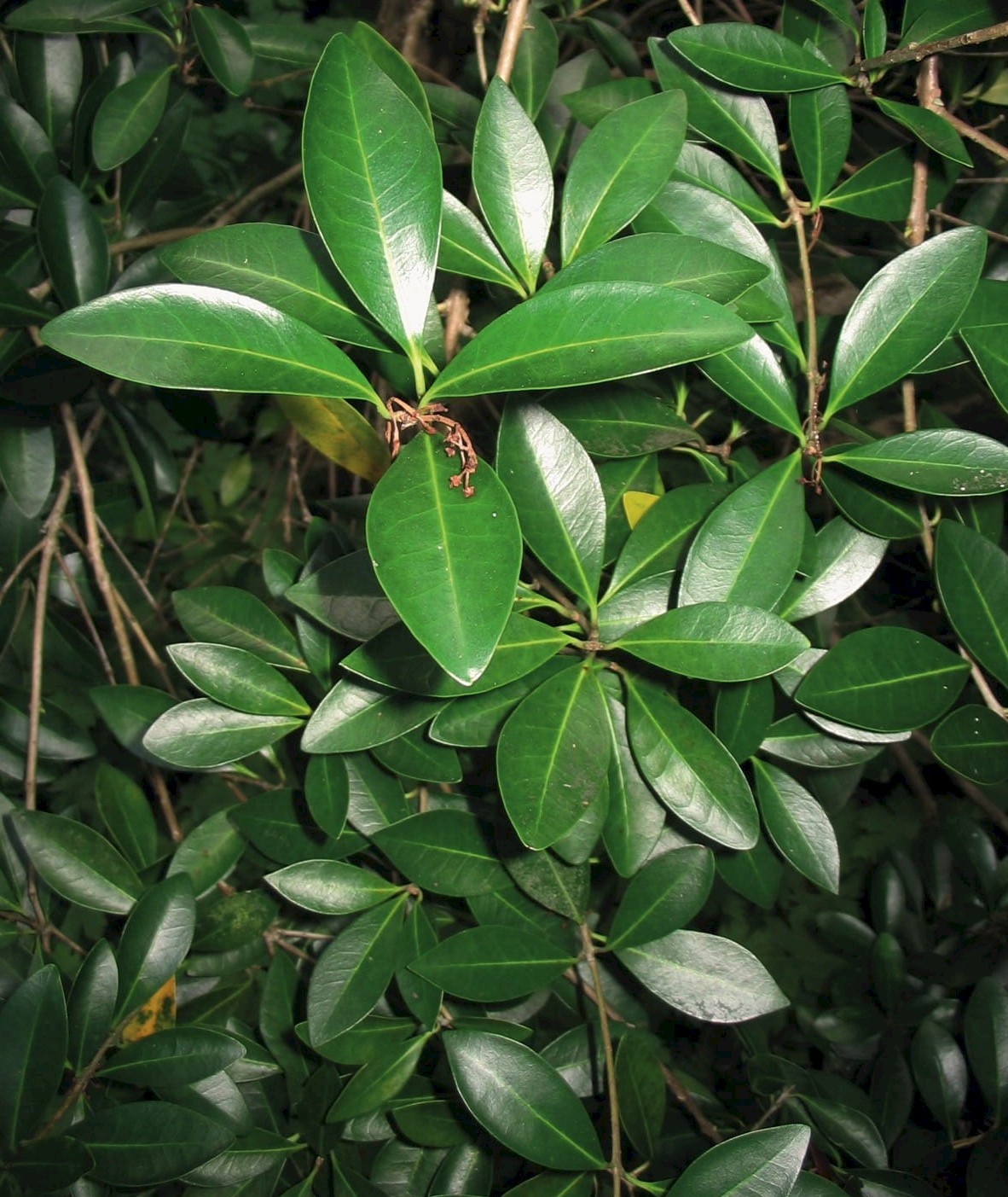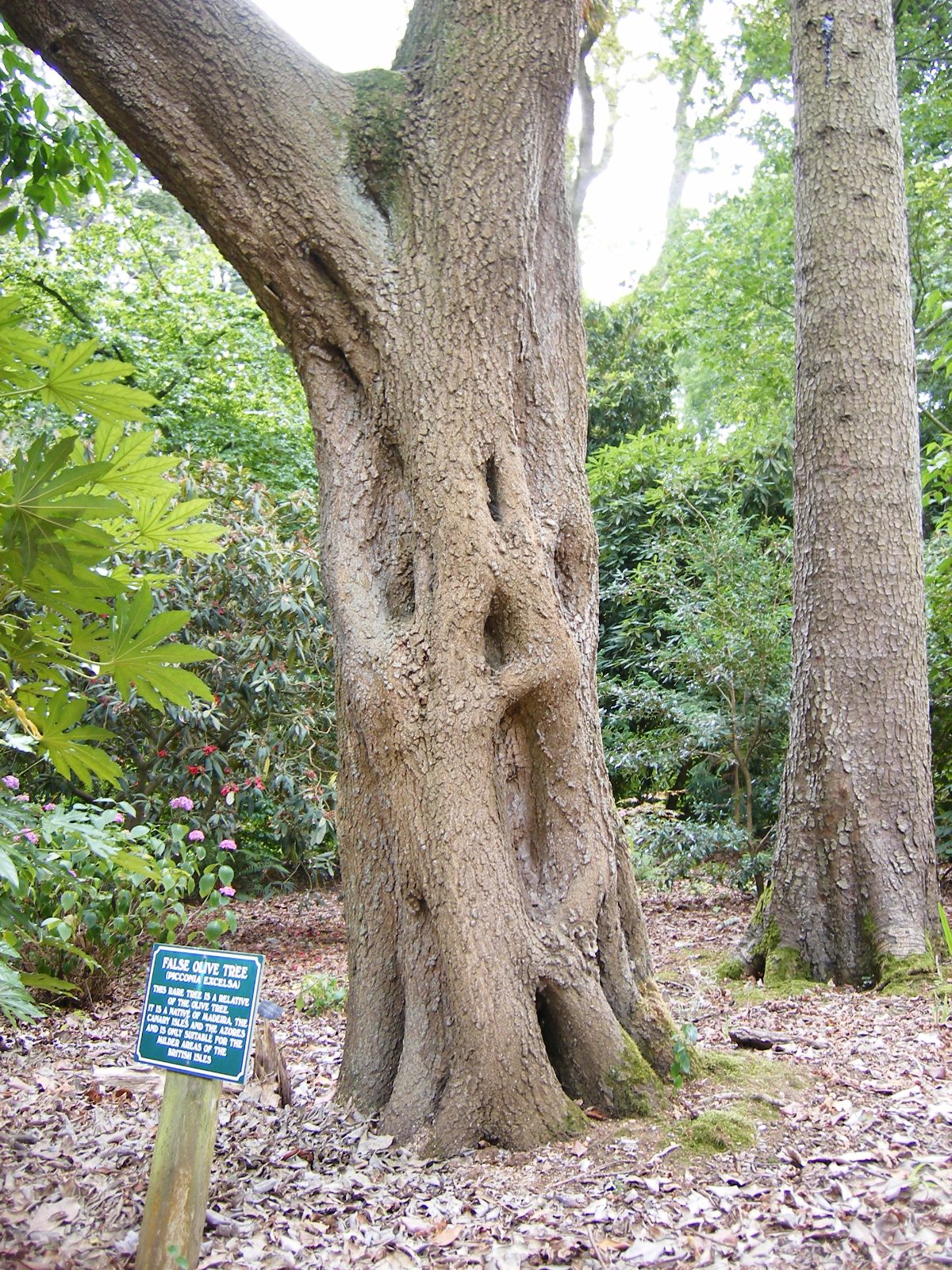Picconia
Credits
Article from Bean's Trees and Shrubs Hardy in the British Isles
Article from New Trees by John Grimshaw & Ross Bayton
Recommended citation
'Picconia' from the website Trees and Shrubs Online (treesandshrubsonline.
Family
- Oleaceae
There are two species of Picconia, one in the Azores (P. azorica), the other in the Canary Islands and Madeira (P. excelsa). They are evergreen shrubs or small trees with simple, opposite, entire or rarely serrulate leaves. Inflorescences are axillary, decussate racemes with semi-persistent bracts enclosing the flowers. The flowers are hermaphrodite; the calyx small and four-lobed; the corolla also four-lobed, the lobes alternating from the calyx lobes; stamens two. The fruit is a drupe (Green 2004).
Picconia excelsa grows well in coastal southern England and Ireland and is capable of forming large evergreen trees in mild conditions. Both species can be propagated from cuttings, or by seed if available.
Bean’s Trees and Shrubs
Picconia
A genus containing two species of small evergreen trees or shrubs native to Macaronesia: P. excelsa (Ait.) DC. from Madeira and the Canary Islands and P. azorica (Tutin) Knobl. from the Azores. It lies within the Olea/Osmanthus complex of genera and may be distinguished by a combination of characters: the decussate racemose inflorescence with characteristic large deciduous, concave, floccose-ciliolate, pale green bracts, the extremely short corolla tube and petals imbricate in early bud.
Footnotes
Contributed by P. S. Green of the Herbarium, Royal Botanic Gardens, Kew.
From the Supplement (Vol.V)
The Abbotsbury specimen of P. excelsa is 59 × 81⁄2 ft (1980), and the other mentioned, at Caerhays, 33 × 33⁄4 + 31⁄2 ft (1975).


